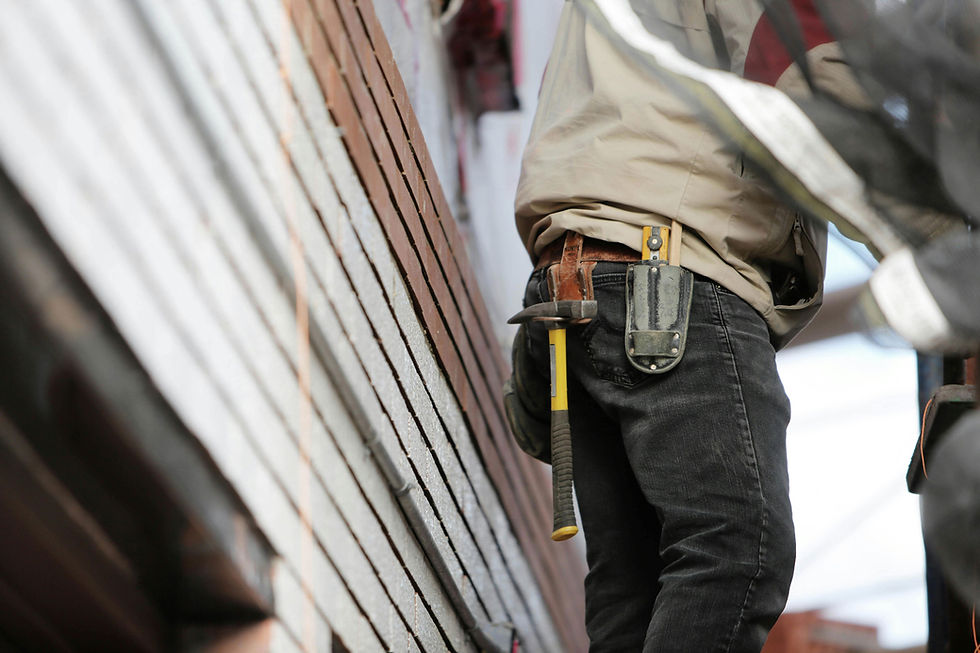6 Steps to Keeping Your Home Cool This Summer
- Al Dyck

- Jun 14, 2022
- 3 min read
Preparing Your Home For the Summer — And Another Potential Heat Wave
With the summer months just around the corner, you probably have numerous summer activities lined up. While you can look forward to warmer weather and days filled with sunshine, you’ll also need to protect yourself—and your home—from potential heatwaves.
According to a new report prepared by the University of Waterloo in Ontario, Canada is warming, on average, at twice the global rate. This has led to more severe and life-threatening heat waves during the summer. Last year’s heatwaves were pretty severe, and cooling centers and other air-conditioned spaces had to be set up in public spaces.
While there are practical steps you can take to protect yourself from heatstroke, you should also take practical steps to keep your home cool during the summer without skyrocketing your electricity bills.
6 Steps to Keeping Your Home Cool This Summer
1. Schedule an EnerGuide home evaluation
An EnerGuide home evaluation can help you better understand how your home consumes energy. The eval will also help you identify retrofits that will boost your home’s energy efficiency.
The evaluation will be carried out by an energy advisor registered with National Resources Canada.
During the eval, your energy advisor will assess the following:
The level of your home’s airtightness using a blower door test
The insulation levels of your basement, walls, ceilings, and attic
The number, type, and location of all windows and exterior doors
The size and efficiency ratings of your HVAC system
All other info relevant to your home’s energy performance
After your EnerGuide home evaluation is complete, your energy advisor will furnish you with the following to help you improve the energy efficiency of your home:
An EnerGuide rating and label
Your Homeowner Information Sheet
Your Renovation Upgrade Report
2. Install a programmable thermostat
A programmable thermostat is designed to adjust your home’s temperature according to a series of programmed settings that go into effect at different times of the day. This allows homeowners to regulate indoor temperatures, which in turn improves home comfort.
A programmable thermostat will prove invaluable during the sizzling summer months and will help you improve your home’s energy efficiency.
3. Improve your home’s insulation
A well-insulated home can significantly reduce your heating and cooling costs. It also makes staying indoors more comfortable by helping to maintain a uniform temperature.
To prevent cool air from seeping out via cracks and crevices, seal up “escape routes” with caulk or foam spray. You could also install batt insulation (which are flat pieces of pre-cut insulation made out of fiberglass or mineral wool). Another great form of insulation is loose-fill insulation (which are small particles of foam, fiber, or other materials).
Don’t forget to consult your Renovation Upgrade Report if your home has undergone an EnerGuide home eval. This report will recommend insulation upgrades to improve the energy efficiency of your home.
4. Replace your HVAC air filters regularly
While most HVAC companies and air filter manufacturers recommend changing your HVAC air filters once every 90 days (or once every 3 months), your air filters will get a lot more use during the summer. To improve your indoor air quality and your home’s overall energy efficiency, consider replacing your HVAC air filters once every 30 days during the summer.
5. Plant shrubs and leafy trees strategically
The plants and trees surrounding your home can do their part to keep your home cool and energy-efficient. Consider strategically planting shrubs, leafy trees, and groundcover plants near your home’s windows to prevent these windows from transferring excess heat into your home.
Shading and evapotranspiration (which is the process by which plants move and release water vapor) from trees can reduce surrounding air temperatures by as much as 6° F. Air temperatures directly under trees can be 25°F cooler than air temperatures above treetops.
6. Install ceiling fans in high-traffic rooms
Ceiling fans pull warm air up against the ceiling and then push it back down against the walls, cooling the circulating air in the process. To keep high-traffic rooms in your home cool, make sure to install ceiling fans that spin in a counterclockwise rotation.
And there you have it—six practical steps to keeping your home cool and energy efficient this summer! Stay safe and cool whether you’re indoors or outdoors.
As a building specialist and licensed Realtor with Sutton West Coast Realty, I am here to answer your questions. The weather is changing and so is the market and I'm happy to help you with advice on both fronts! Call me anytime Al 604-970-7083





Comments